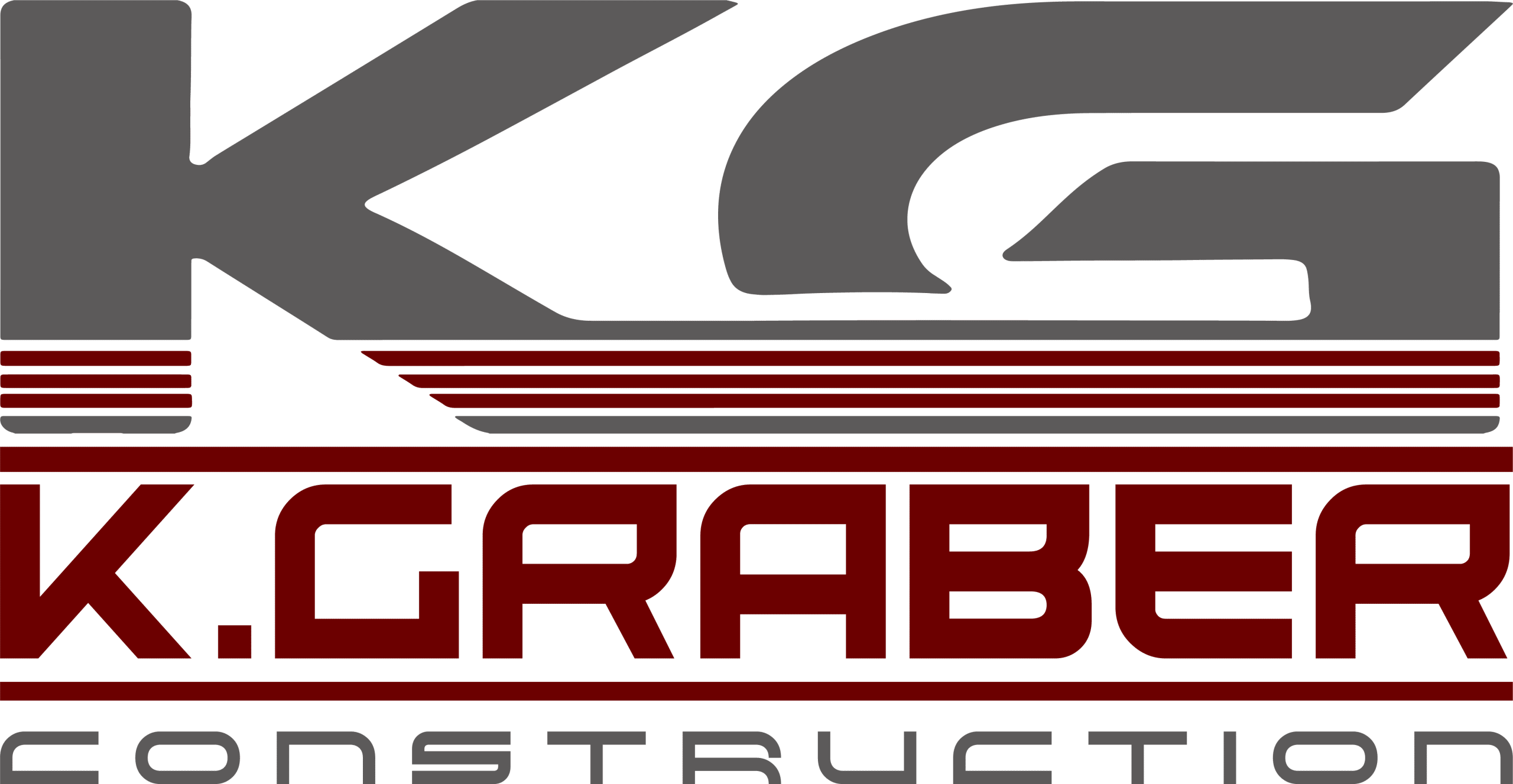What You Need to Know About Building an Insulated Concrete Form Home
Are you worried about power bills that seem to climb higher every month?
Rising energy costs have made it essential to conserve energy, yet that becomes difficult as the world warms. You’re caught between saving energy and spending more to keep warm or cool.
In an age when everyone is looking for sustainable, durable, and efficient home solutions, Insulated Concrete Form (ICF) homes are becoming a popular choice for new homes.
At K Graber Construction, we combine three generations of construction experience, and we are always ready to tackle the challenges of your next construction project to make it as easy and painless as possible.
Ready to find out more? Let’s go!
What Is an ICF Home?
ICF homes may look like a bunch of Lego blocks, but this seemingly simple construction method is actually a complex system of formed concrete blocks sandwiched between layers of thermal insulation.
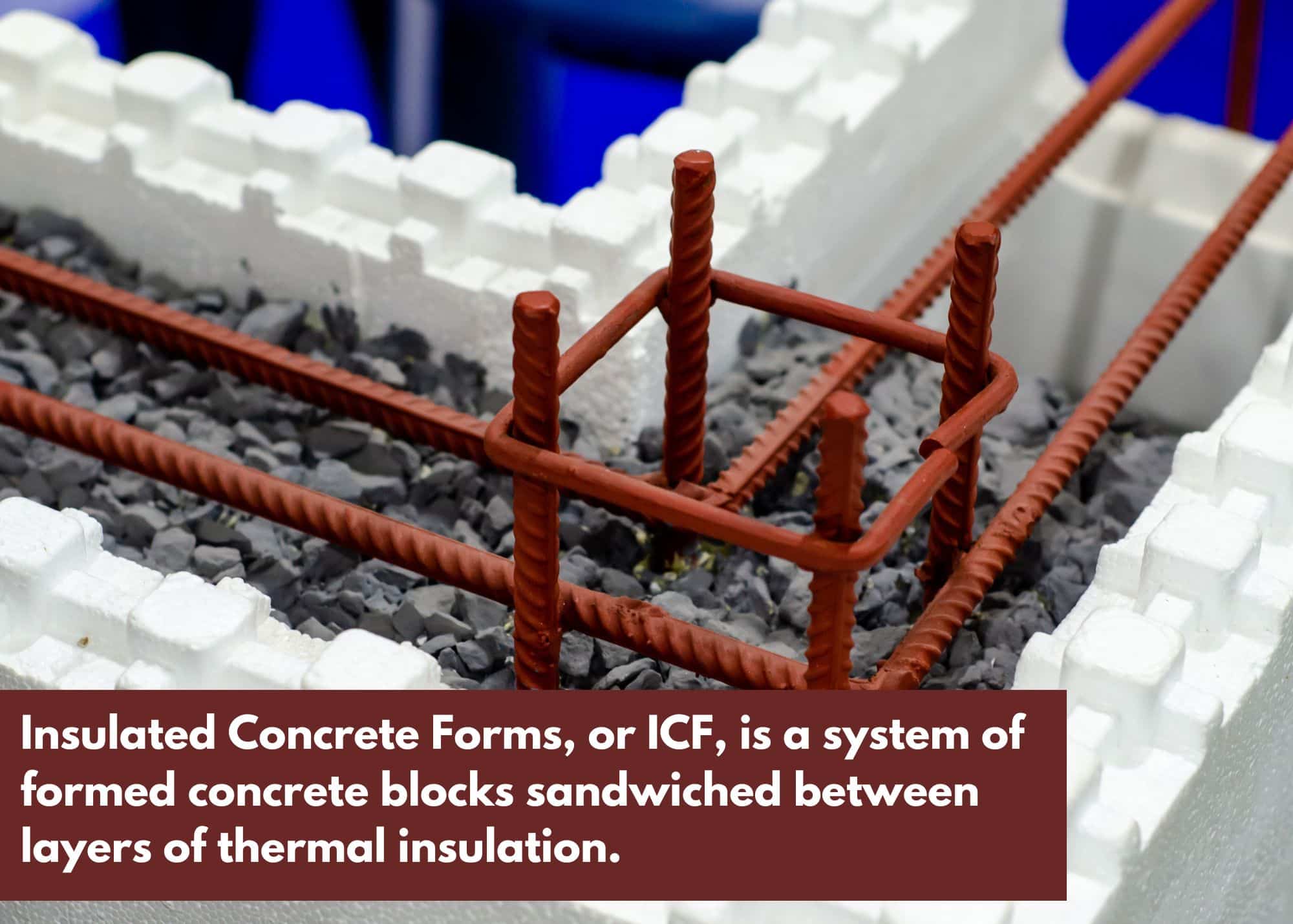
This thermal insulation shell can be used to form walls, floors, and roofs.
The blocks interlock to form the building's structure, and concrete is poured to set the forms. The result is a well-insulated, sturdy structure that provides protection against the elements and is stronger than traditional wood framing.
ICF is gaining popularity in the housing market among industry professionals and the public, due to its increased use in construction of new homes. Its appeal lies largely in reducing energy consumption and disaster resilience. More developments in mid-price homes now feature ICF construction.
If that sounds appealing, you’re not alone. With more homes built with ICF methods, industry analysts forecast strong growth in ICF construction because of its practicality, durability, and flexibility. Read on to find out how you can build a better home using ICF techniques!
Pros and Cons of ICF Homes
As with any investment, it’s wise to educate yourself on the ICF method. We’ll begin by highlighting some pros and cons of ICF construction:
Pros of ICF Construction:
- High insulation ratings
- Increased energy efficiency
- Enhanced durability and resistance to natural disasters
- Quiet interiors due to sound buffering
- Better resale value
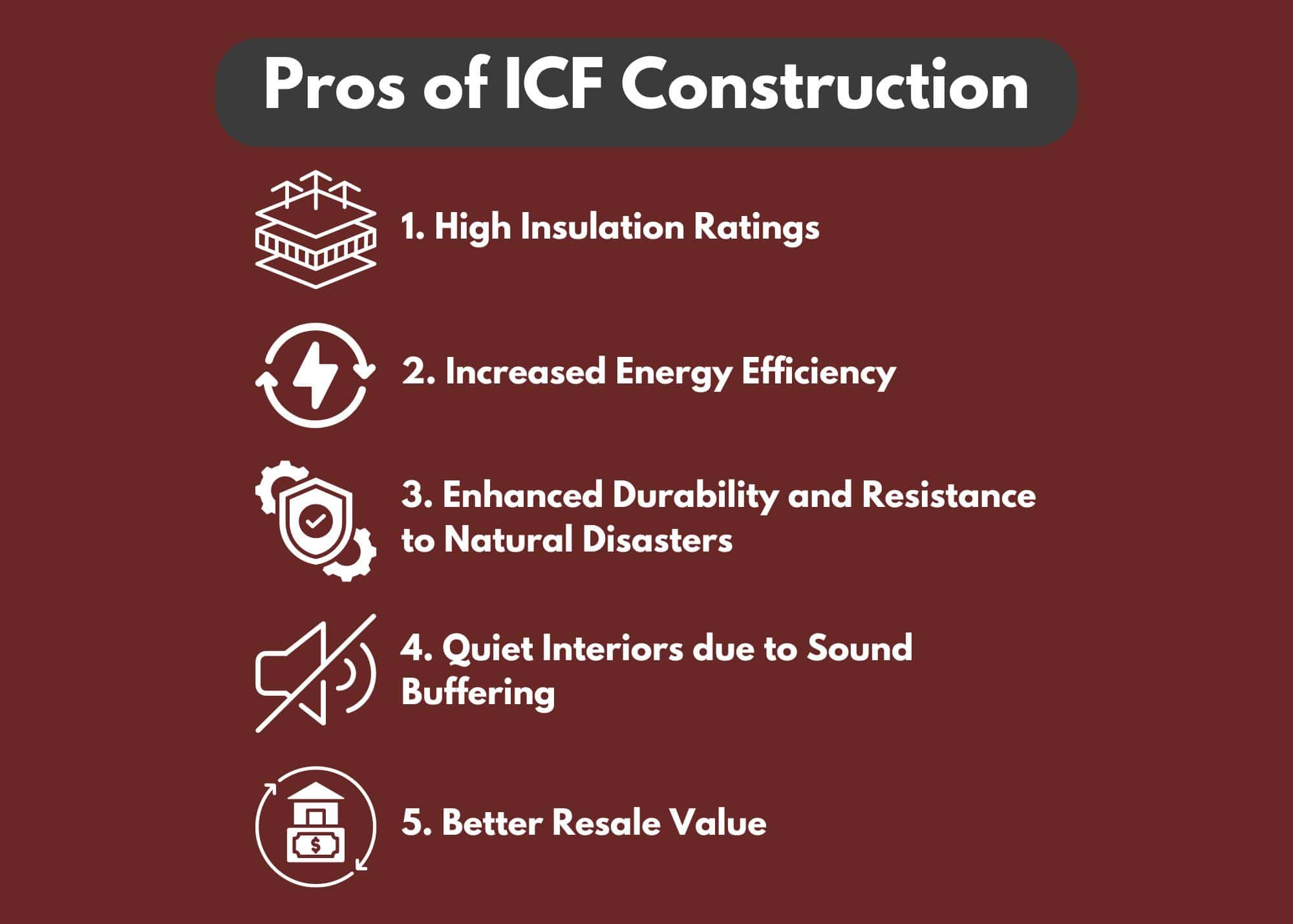
As this list shows, ICF construction provides some desirable qualities for a good home. However, there are also a few cons to ICF structures:
Cons of ICF Construction:
- Potentially higher upfront costs
- Requires specialized skills and contractors to build
- Thicker walls
Now that we’ve briefly discussed ICF's pros and cons let’s examine how these attributes can help you decide whether or not to build an ICF home.
Energy Efficiency and Cost Savings
Savings on heating and cooling: How much energy could you save with a home with ICF walls? How about 50%? In addition to paying less for heating and cooling, your HVAC system will have less wear and tear, extending its lifespan.
ICF walls even absorb heat and cold, gradually releasing it back during a thermal exchange, further extending your energy savings.
Energy performance: Compared to wood-frame homes, ICF walls are practically airtight, so air leaks do not occur. This is a significant advantage over traditional wood-and-stud framing, which is prone to insulation gaps and thermal bridging, resulting in energy loss.
In fact, ICF construction is one of the essential building blocks of a LEED-certified home, meaning that the home is built for maximum energy efficiency. Combined with advanced HVAC systems, LED lighting, quality windows, and solar panels, these features hedge against future energy spikes and add value to the home. Your wallet will thank you!
Sound Absorption
Quiet interiors due to sound buffering: The combination of foam and concrete results in a wall with remarkable sound-absorbing qualities. Many owners of ICF homes have been surprised at how quiet their homes are, from indoor noise and sounds emanating from outside.
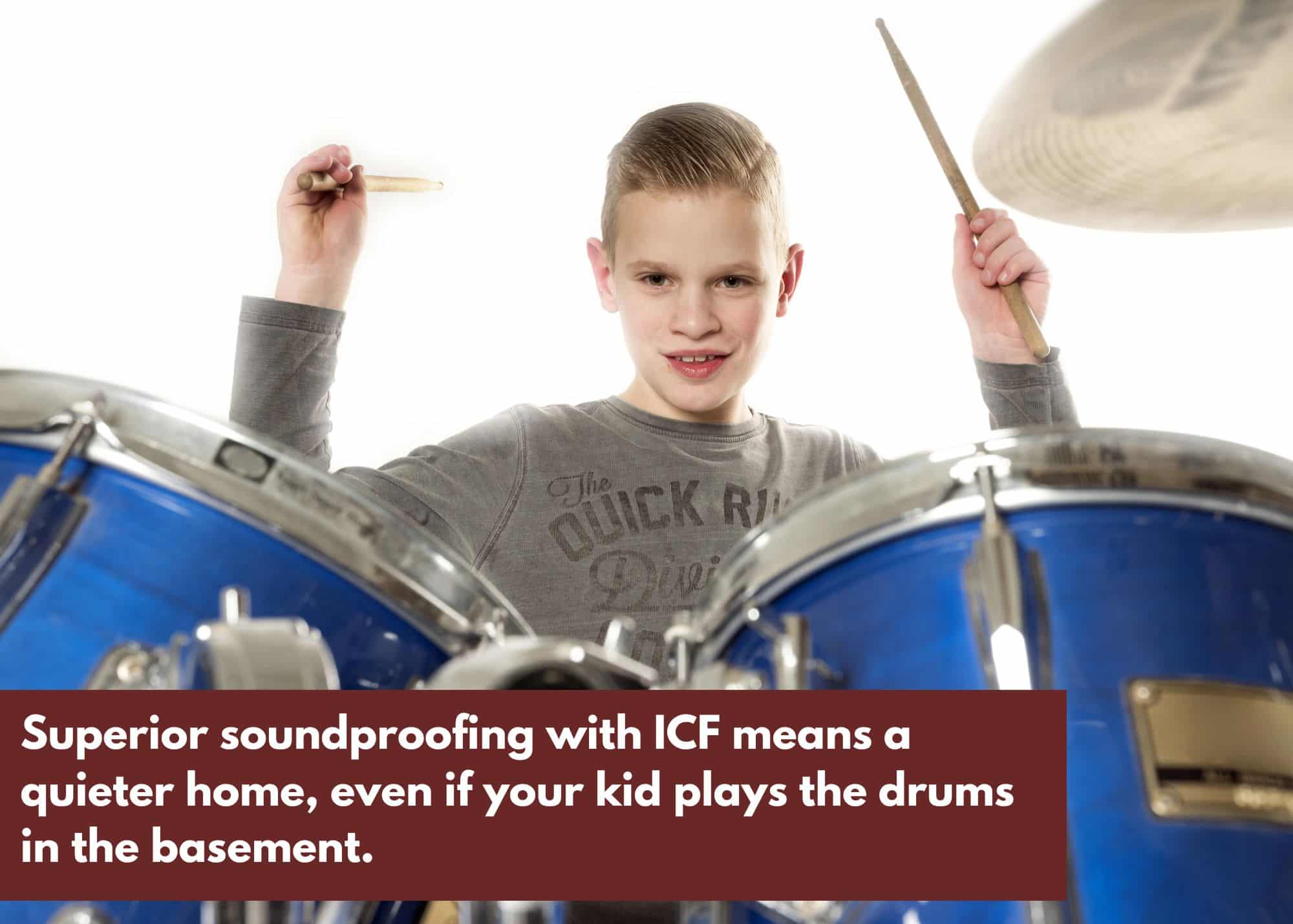
Homes in noisy areas benefit from ICF: Because of its excellent sound insulation, ICF construction will benefit a home near an airport, highway, or other noisy environment, allowing the owner to live and sleep in peace.
ICF homes not only help you keep your energy costs down, but they also provide a space for everyone to find their own way of relaxing. You can put Timmy in the basement with his new drum kit and still have a peaceful evening in your living room!
Durability and Disaster Resistance
ICF homes are sturdy: Thanks to ICF blocks' inherent strength and durability, structures built with ICF walls are inherently stable, making them suitable for building in earthquake-prone areas.
ICF homes are safe: Studies in the ICF industry have found that ICF homes and buildings can withstand winds and debris of up to 250 miles per hour or an F4 tornado! There have been examples of ICF buildings still standing after hurricanes in Florida and the Caribbean.
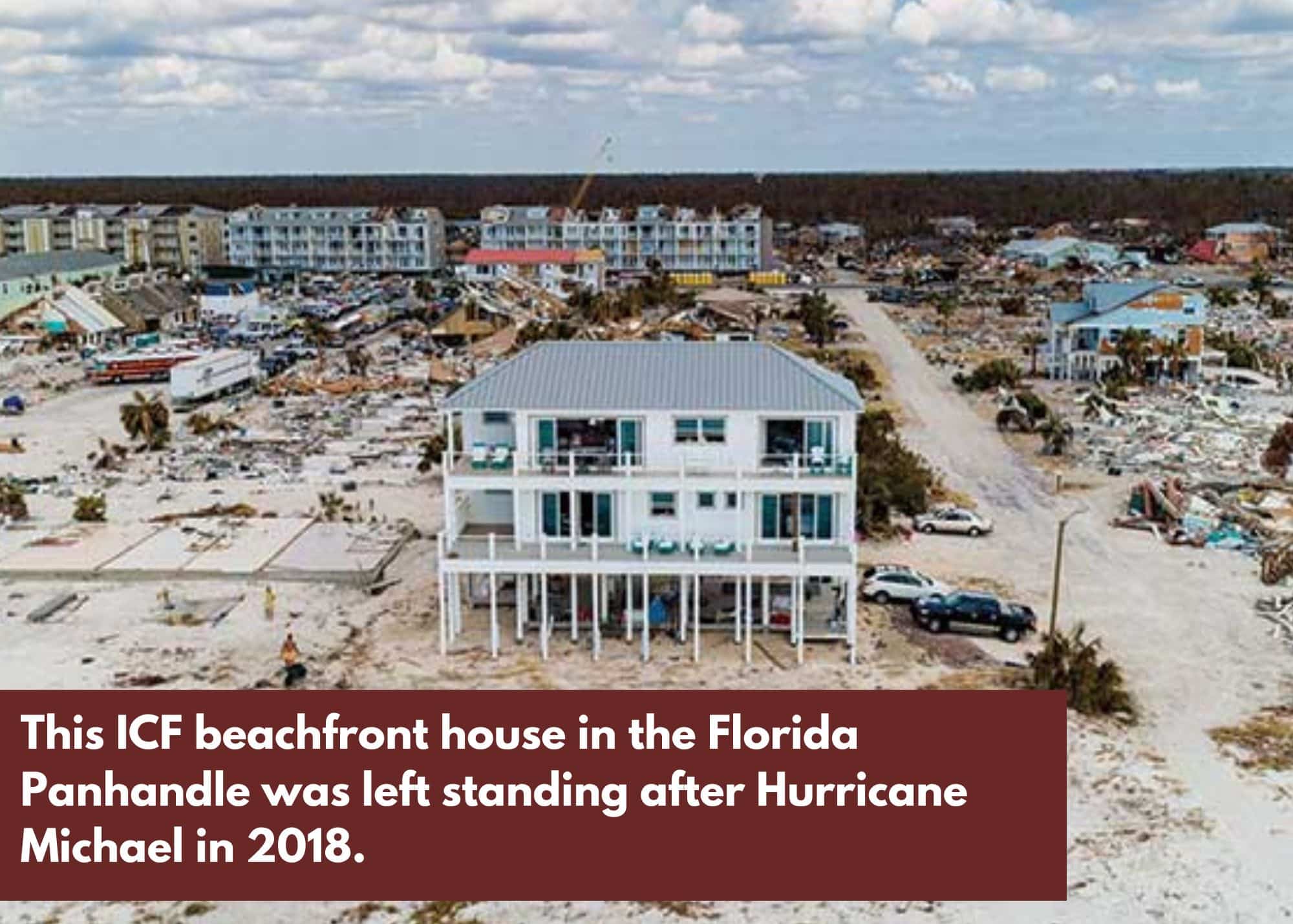
The many benefits of ICF construction, from comfort to safety, will give you peace of mind. Check out this case study that expands on the concepts we’ve discussed so far.
However, ICF homes have drawbacks as well. Consider these cons when looking to build an ICF home:
- Potentially higher initial costs: Building an ICF home will require a higher initial investment than traditional building methods. On average, the cost of building a home using ICF is between $120 - $230 per square foot, compared to $100 - $155 for a traditional wooden house.
- Requires specialized builders: Because ICF is relatively new, fewer contractors have specialized ICF experience. While this form of construction is gaining traction, you may need more time to find an ICF-trained contractor to build your home.
- Thicker walls: Depending on the application and the load the wall needs to support, ICF walls can be anywhere between 4” and 12” thick, leaving less interior space, so plan appropriately!
Despite the upfront increased material costs, a trained team can build an ICF structure in less time than a traditional wood-frame home. Because of the built-in insulation qualities, the process of applying building wrap can be eliminated entirely, saving more time and money. Further savings come in the form of reduced heating and cooling costs over the home’s lifetime.
Design Flexibility and Customization Options
But wait, won’t my house look like it was made of Lego blocks?
Not if you don’t want it to!
The ICF blocks form the basic structure of the house. From there, the sky’s the limit! ICF homes can be finished with a variety of materials, such as:
- Vinyl
- Brick
- Wood
- And many more!
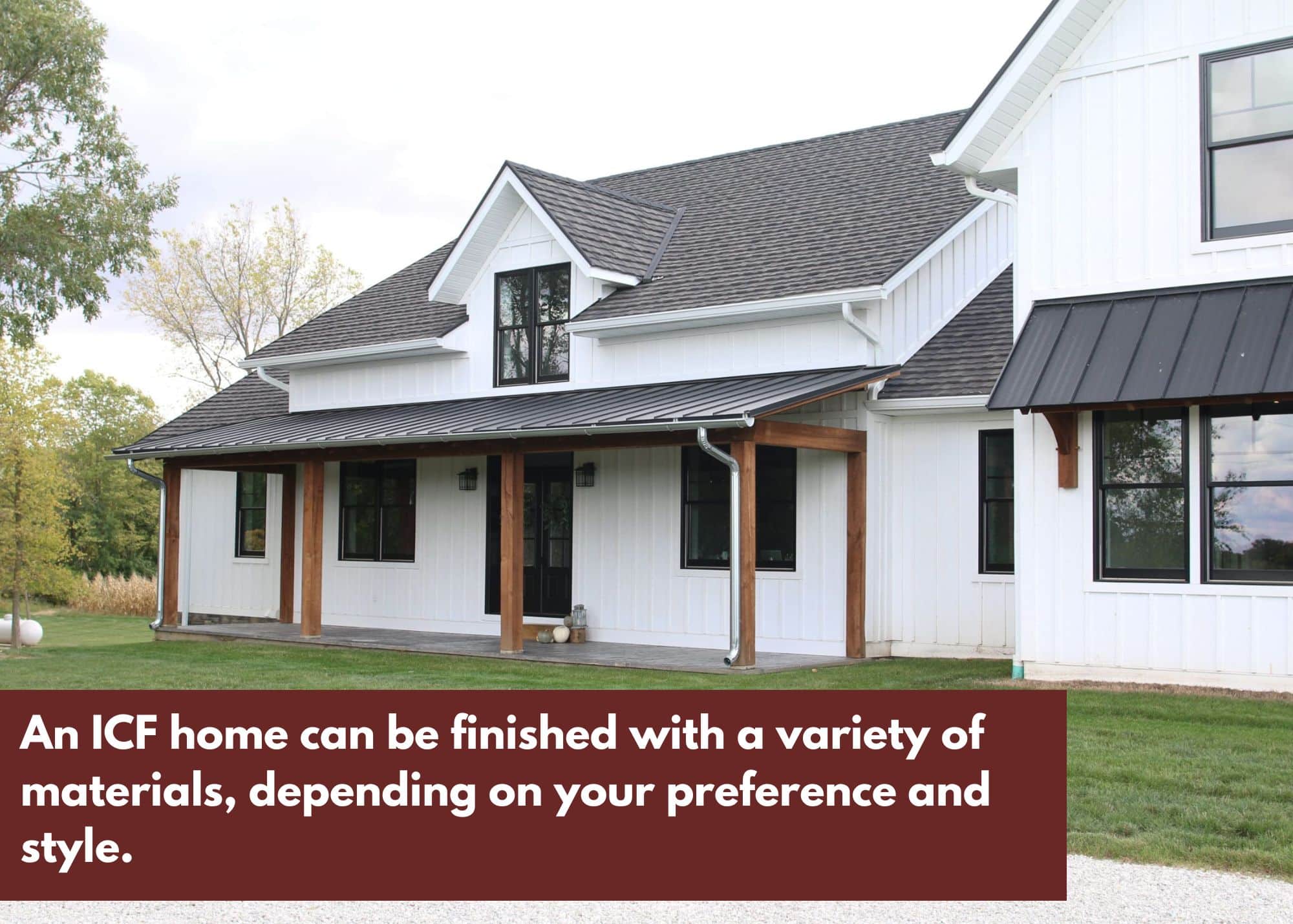
The flexibility and customization have allowed for many beautiful home designs, from castles to tiny homes and everything in between. The possibilities are endless!
High Return on Investment
Because ICF construction embodies sustainable building practices, utilizing recyclable materials, lowering carbon footprint, and promoting energy efficiency, this eco-conscious approach appeals to environmentally aware buyers with an interest in modern green building standards. An energy-efficient home will always have a high return on investment (ROI) and be desirable in the housing market.
Let’s Build That House!
Let’s recap our exploration of ICF construction and its benefits:
- High insulation properties resulting in energy efficiency
- Disaster resiliency
- Quiet interiors independent of location
- Flexibility of design and customization
- Increased resale value
The reality is that building an energy-efficient home is a wise investment. Not only does it ease the ever-increasing pressure on your wallet, but it also helps safeguard a brighter future for your children.
Alternate Energy-Efficient Homes
If you’re not sure about an ICF construction home, here are some alternate energy-efficient options:
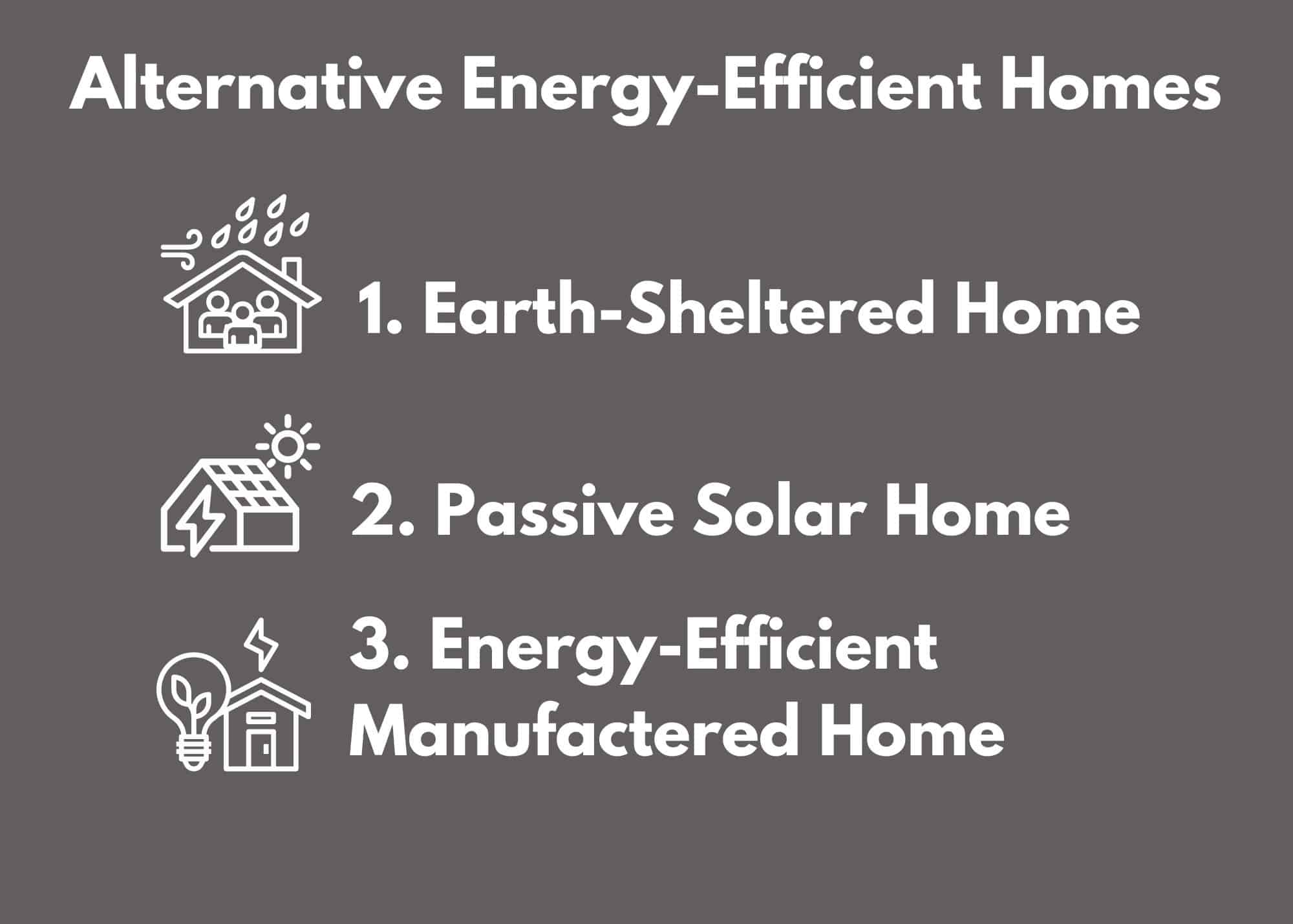
Earth-Sheltered Home: Save energy and look stylish while fulfilling your fantasy of living like a Hobbit with these homes recessed into the ground. These homes use the Earth’s own insulating properties to conserve energy.
Passive Solar Home Design: Using different design strategies than ICF, passive solar home design takes advantage of a building’s site, climate, and materials to minimize energy use. It also reduces heating and cooling loads through energy-efficiency strategies and then meets those reduced loads in whole or in part with solar energy.
Energy-Efficient Manufactured Homes: Also known as mobile homes, advances in energy-efficient technology have made these homes an attractive option for lower-cost housing. Their modular nature also means that current mobile homes can be renovated to be energy efficient.
Interested in learning more about energy-efficient housing? Become more informed with these extra blogs:
Conclusion
No matter your choice, an energy-efficient home is just smart money. It’s also smart to hire professionals, and K Graber Construction has the expertise and experience to ensure that your ICF home is built to the highest quality and standards.
Contact us today to start building your dream home!
